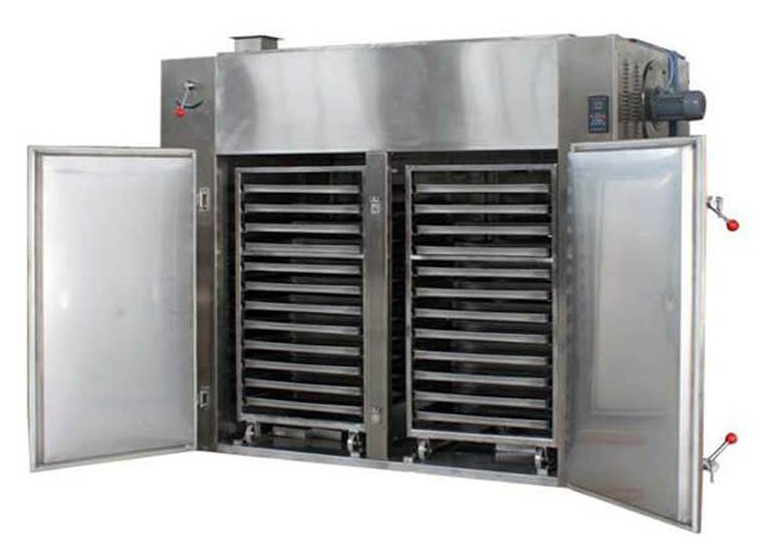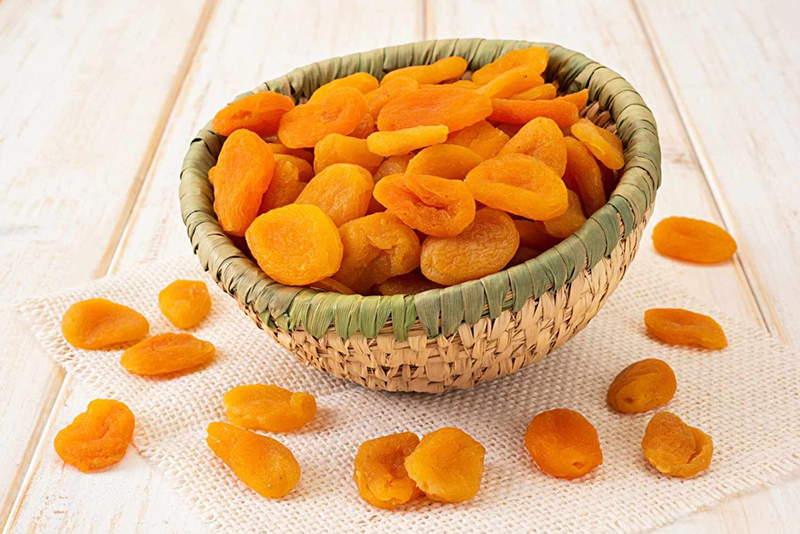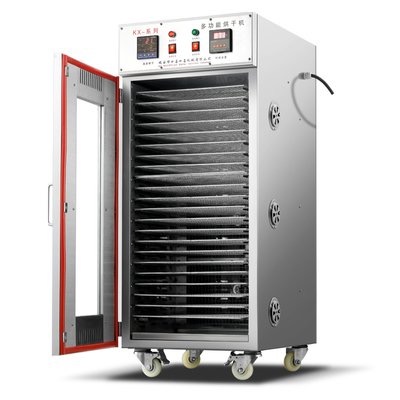
Content Menu
● What is a Food Dehydrator?
● Types of Food Dehydrators
● Benefits of Using a Food Dehydrator
● How Does a Heat Pump Dryer Work?
>> Key Features of Heat Pump Dryers
● Comparing Heat Pump Dryers with Other Dryers
● How to Choose the Right Food Dehydrator
● Tips for Using a Food Dehydrator
● Common Foods Suitable for Dehydration
● The Science Behind Dehydration
● Health Benefits of Dried Foods
● Conclusion
● FAQs
>> 1. What foods can I dehydrate in a food dehydrator?
>> 2. How long does it take to dehydrate food?
>> 3. Can I use my oven instead of a dehydrator?
>> 4. Is it necessary to pre-treat fruits before dehydrating?
>> 5. How should I store dried foods?
● Citations:
Food dehydrators are essential tools for preserving food, enhancing flavors, and maintaining nutritional value. They work by removing moisture from food, which helps to prevent spoilage and extend shelf life. In this article, we will explore the different types of food dehydrators, their benefits, and how they compare to other drying methods.

What is a Food Dehydrator?
A food dehydrator is an appliance that uses heat and airflow to remove moisture from food items. By lowering the water content in fruits, vegetables, meats, and herbs, dehydrators create a dry environment that inhibits the growth of bacteria, yeast, and mold. This preservation method is not only effective but also enhances the flavor and texture of foods.
Types of Food Dehydrators
There are several types of food dehydrators available on the market today:
- Convection Dehydrators: These use a fan to circulate hot air around the food, ensuring even drying. They are popular for their efficiency and consistent results.
- Stackable Dehydrators: These models consist of multiple trays that stack on top of each other. They are compact and ideal for small kitchens but may require manual rotation of trays for even drying.
- Commercial Dehydrators: Designed for larger quantities of food, these machines are robust and can handle high volumes. They often come with advanced features such as temperature control and timers.
- Solar Dehydrators: Utilizing solar energy, these dehydrators are environmentally friendly but depend on sunny weather conditions.
Benefits of Using a Food Dehydrator
Using a food dehydrator offers numerous advantages:
- Nutritional Preservation: Dehydrating food retains most of its nutrients, making it a healthy option for snacks.
- Cost-Effective: By preserving seasonal fruits and vegetables, you can save money and reduce waste.
- Flavor Enhancement: Concentrating flavors through dehydration can make snacks more enjoyable.
- Versatility: Dehydrators can be used for a variety of foods including fruits, vegetables, meats (for jerky), herbs, and even yogurt.
- Convenience: Dried foods are lightweight and easy to store, making them perfect for camping trips or long-term storage.
How Does a Heat Pump Dryer Work?
A heat pump dryer is an advanced type of dryer that uses a heat pump to transfer heat from one place to another. Unlike traditional dryers that expel hot air outside, heat pump dryers recycle hot air within the machine. This process makes them energy-efficient and environmentally friendly.
Key Features of Heat Pump Dryers
- Energy Efficiency: Heat pump dryers consume less energy compared to conventional dryers due to their recycling mechanism.
- Gentle Drying: They operate at lower temperatures, which helps preserve the quality of delicate fabrics or foods.
- Moisture Control: These dryers have built-in sensors that monitor moisture levels and adjust drying times accordingly.

Comparing Heat Pump Dryers with Other Dryers
| Feature | Heat Pump Dryer | Conventional Dryer | Food Dehydrator |
| Energy Efficiency | High | Moderate | High |
| Drying Temperature | Low | High | Moderate |
| Moisture Control | Yes | No | Yes |
| Versatility | Limited | Limited | High |
| Initial Cost | Higher | Lower | Moderate |
How to Choose the Right Food Dehydrator
When selecting a food dehydrator, consider the following factors:
- Capacity: Determine how much food you plan to dry at once. Larger models are suitable for bulk drying.
- Temperature Settings: Look for models with adjustable temperature settings for different types of foods.
- Ease of Cleaning: Removable trays make cleaning easier.
- Noise Level: Some dehydrators can be noisy; check reviews for noise levels if this is a concern.
- Brand Reputation: Research brands known for quality and durability to ensure you make a wise investment.
Tips for Using a Food Dehydrator
To achieve the best results when using a food dehydrator:
1. Prepare Food Properly: Wash, peel, and slice food into uniform pieces to ensure even drying.
2. Use the Right Temperature: Different foods require different drying temperatures; refer to guidelines for optimal results.
3. Avoid Overloading: Leave space between pieces for air circulation.
4. Store Properly After Drying: Use airtight containers to keep dried foods fresh.
5. Experiment with Flavors: Consider marinating meats or seasoning vegetables before dehydrating to enhance flavor profiles.
Common Foods Suitable for Dehydration
Certain foods dehydrate better than others due to their water content and texture. Here are some popular options:
- Fruits: Apples, bananas, strawberries, mangoes, and pineapples are excellent choices. Slice them thinly for quicker drying times.
- Vegetables: Carrots, bell peppers, zucchini, tomatoes (especially sun-dried tomatoes), and mushrooms work well when properly prepared.
- Herbs: Basil, oregano, thyme, and parsley retain their flavor when dried; simply wash and hang them upside down or use your dehydrator.
- Meats: Lean cuts like chicken breast or beef can be transformed into jerky with the right marinade before dehydration.
The Science Behind Dehydration
Understanding the science behind dehydration can help you achieve better results. The process involves removing moisture through evaporation while maintaining the integrity of the food's structure:
1. Temperature Control: Maintaining appropriate temperatures (usually between 125°F to 155°F) ensures that enzymes responsible for spoilage are inactivated without cooking the food.
2. Airflow Management: Good airflow is crucial as it helps carry away moisture-laden air from the food surface while bringing in warm dry air.
3. Moisture Content Awareness: Different foods have varying moisture contents; knowing this helps in setting appropriate drying times.
Health Benefits of Dried Foods
Dried foods offer numerous health benefits:
- Nutrient Density: Dried fruits retain vitamins like A and C while providing fiber without added sugars or preservatives found in many commercial snacks.
- Low Calorie Snacks: Many dried fruits are low in calories compared to their fresh counterparts when consumed in moderation.
- Convenience for Dieters: Dried fruits can be an easy way to add healthy snacks without excess weight or bulk in your diet plan.
Conclusion
Food dehydrators are invaluable appliances for anyone looking to preserve food effectively while enhancing its flavor. With various types available, it's essential to choose one that fits your needs and preferences. Whether you opt for a convection model or a stackable unit, the benefits of using a dehydrator far outweigh any initial investment.
In addition to being energy-efficient like heat pump dryers, they offer versatility in preserving not just fruits and vegetables but also meats and herbs. By understanding how these machines work and how to use them effectively, you can enjoy delicious dried snacks year-round while minimizing waste and maximizing nutrition.

FAQs
1. What foods can I dehydrate in a food dehydrator?
You can dehydrate a wide range of foods including fruits (like apples and bananas), vegetables (like tomatoes and bell peppers), meats (for jerky), herbs (like basil), and even yogurt.
2. How long does it take to dehydrate food?
The time it takes to dehydrate food varies depending on the type of food and thickness of slices. Generally, it can take anywhere from 4 to 12 hours or more.
3. Can I use my oven instead of a dehydrator?
Yes, you can use an oven set at low temperatures (around 140°F or 60°C) as an alternative to a dehydrator; however, it may not be as efficient or effective in maintaining consistent airflow.
4. Is it necessary to pre-treat fruits before dehydrating?
Pre-treating fruits with lemon juice or ascorbic acid can help prevent browning and preserve color; however, it is not always necessary depending on personal preference.
5. How should I store dried foods?
Store dried foods in airtight containers in a cool, dark place. Vacuum sealing is also an excellent option for extending shelf life.
Citations:
[1] https://www.thespruceeats.com/best-food-dehydrators-4077285
[2] https://elephantenergy.com/heat-pump-dryer-vs-electric-dryer-whats-right-for-you/
[3] https://etsolutions.in/what-are-the-advantages-of-a-food-dehydrator-machine-in-india/
[4] https://www.fooddehydratorsales.com
[5] https://www.istockphoto.com/photos/food-dehydrator
[6] https://www.youtube.com/watch?v=mtDzdYoyeR8
[7] https://www.youtube.com/watch?v=m1K2mbk8WZo
[8] https://www.seriouseats.com/best-food-dehydrators-5216308
[9] https://www.100percent.co.nz/blog/heat-pump-dryer-vs-condenser-dryer
[10] https://www.dreamstime.com/photos-images/food-dehydrator.html











